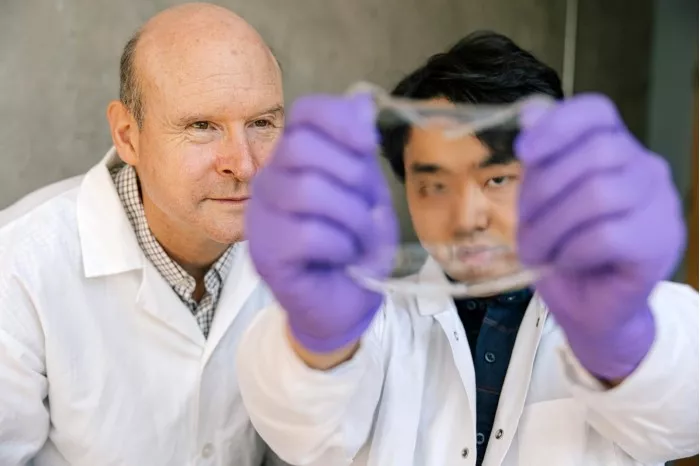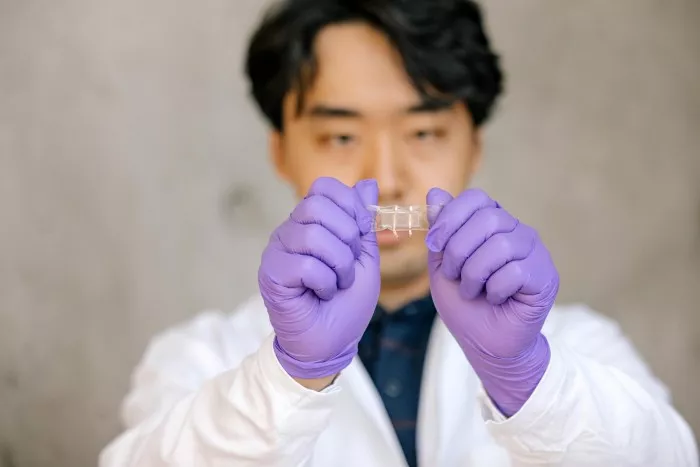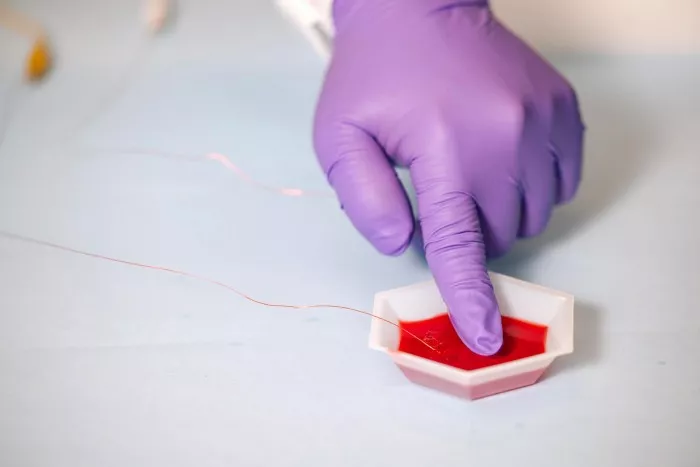In the effort to build a sensor comparable to real skin, ionic skin, which is made of biocompatible flexible hydrogel and uses ions to transfer charges, has shown considerable advantages** Unlike traditional "smart skin" sensors made of plastic and metal, hydrogels are as soft as real skin. If popularized on artificial limbs or mechanical arms, this technology will give more comfortable wearing feeling and more natural senses.
(from Kai Jacobson / UBC School of Applied Sciences)
Previously, we knew that this hydrogel could generate voltage when touched, but we still did not know the underlying mechanism until a research team from the University of British Columbia (UBC) gave a clear explanation in the journal Science published on April 28, 2022.
Yuta Dobashi, the first author of the study, said he began this work while studying for a master's degree in biomedical engineering at the University. We know that the working principle of hydrogel sensors is that they can give voltage and current response to pressure or touch, which is called piezoelectric effect.
In order to find out the principle behind it, he designed a unique experiment under the guidance of Dr. John Madden, a professor of computer engineering at UBC School of Applied Sciences.
First, hydrogel sensors containing positive and negative ion salts of different sizes were designed. Then, together with the research co authors of the Department of physics and chemistry of the University, the magnetic field was deployed to accurately track how ions move "when pressure is applied to the sensor".
It was found that when the pressure was applied to the gel, it would disperse the ions in the liquid at different speeds and generate electrical signals.
Interestingly, smaller positive ions move faster than larger negative ions. This leads to an electric field due to the uneven distribution of ions, and the working principle of piezoelectric sensor is the same.
The researchers said that this new discovery confirmed that the working mode of hydrogels is similar to that of human pressure perception (also by moving ions to respond to pressure), which inspired potential new applications based on "ionic skin".
Dr. John Madden added: the simplest application scenario is to create sensors that interact with cells and the nervous system. And in addition to sending signals to the nerves, we can also imagine activating the nerves to control muscle contraction.
Researchers used jelly desserts to demonstrate how ions move in hydrogels
If the prosthesis is wrapped with "ionic skin", its skin can sense objects through touch or pressure. Then the information is transmitted to the brain through the nerve, and the brain activates the motor required to grasp or lift the object.
Yuta Dobashi, who is currently studying for a doctorate at the University of Toronto, hopes to continue to study ion technology after graduation. It is believed that with the further development of skin sensor and neural interface technology, such bionic applications will also usher in a wave of explosion.
Or we can make wearable soft water gel sensors to monitor the vital signs of patients without disturbing the eyes and generating electricity. As a reference, the smart skin Market in 2019 is about US $4.5 billion and is still growing.
Details of this study have been published in the recently published Science 》In the journal, the original title was piezoionic mechanoreceptors: force induced current generation in hydrocarbons.



